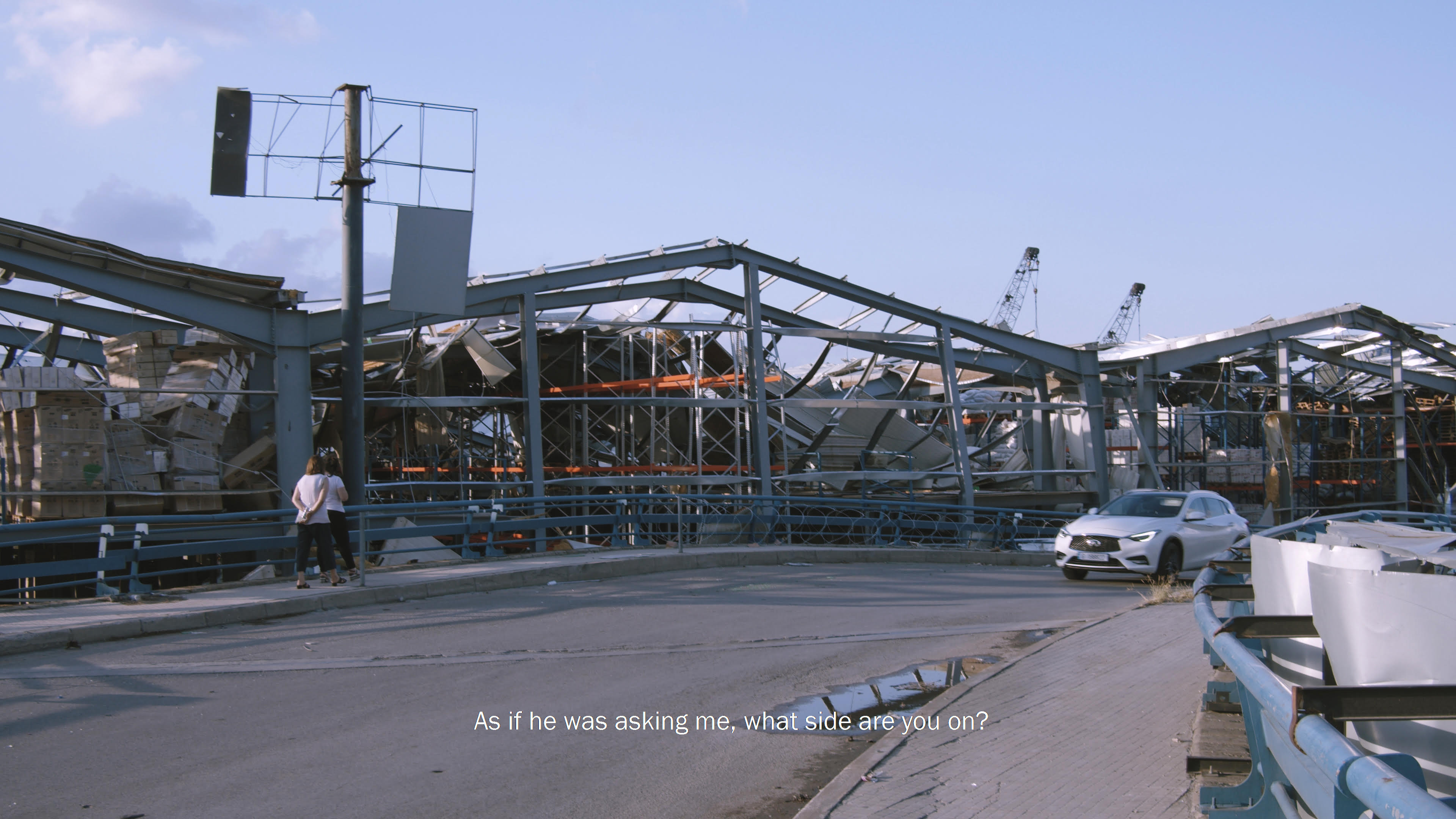Join us for the screening of Red is the Color of my Eye by Nesrine Khodr & Congress of Idling Persons by Bassem Saad at the Sursock Museum.
Date: March 27 - 7:30PM
Duration: 23min & 36min
Language: Arabic with English subtitles
This event is part of Home Works 9: A Forum on Cultural Practices.
Looking forward to seeing you!
Red is the Color of my Eye (2000) - Nesrine Khodr
“Two concierges of Hamra street, two buildings of Hamra, the two sides of the street, two dimensions: time and space; memory and territoriality. They have been keeping their buildings for the past 20 years, they watch over them, watch the people coming in and out of them, watch the people on the street, watch the street. They spend a good deal of their time in the space between the building and the street, they do not live and no one lives in the buildings they keep.”
Nesrine Khodr works across film, performance, and installation. She has produced and conceived cultural shows for television, recorded voice-overs, and performed in various films and plays. Her recent works include Tahrik (2018), Rear Basin (2023), and Common Threads (2023).
Congress of Idling Persons (2022) – Bassem Saad
The film features five interlocutors who play themselves and greater fictions, in the shadows of recent world-historical events. Artist and writer Bassem Saad, DJ and translator Rayyan Abdel Khalek, musical artist Sandy Chamoun, writer Islam Khatib, and organizer Mekdes Yilma examine a cartography of protest, crisis, humanitarian and mutual aid, migrant labor, and Palestinian outsider status. Punctuated by the late Arab Spring, the Black Lives Matter revolts of 2020, and the Beirut Port explosion, the film weaves through transhistorical constants—from rage and mourning to spontaneity and besiegement—propelled by the speech and acts of its performers. If a group action is a riot and not a revolution, then who films it? If four is a riot, it is also a congress.
Bassem Saad is an artist and writer. Their work explores notions of historical rupture, spontaneity, and surplus, through film, performance, and sculpture, alongside essays and fiction. With an emphasis on past and present forms of struggle, they attempt to place scenes of intersubjective exchange within their world-historical frames.









